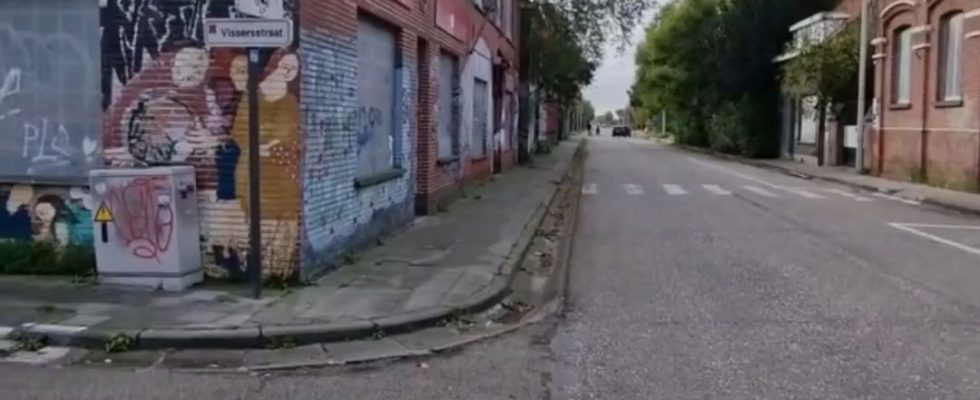Walking through the streets of Doel, you feel like you’re in the 2054 travelers trend, which was a hit on TikTok a few months ago. Except that here, it is rather in the past that we take a leap, the life of this small Belgian village having been frozen at the end of the 1990s, when almost all of its inhabitants were expropriated. 20 minutes takes you to visit this extraordinary and timeless place.
Doel is located in the north of Belgium, near Antwerp, a stone’s throw from the border with the Netherlands. It’s impossible to land there by chance unless you get lost while looking for a shortcut that you’ll never find. The village is in fact completely enclosed within the infrastructures of the gigantic port of Antwerp, between a nuclear plant and the immense docks welcoming the no less immense container ships. As crazy as it may seem, the entrance to Doel is blocked by a sort of checkpoint without guards, but lined with cameras, all topped by a sign warning the curious that acts of vandalism will be severely punished in this village. still inhabited.
Mass expropriation in the 1990s
But why so many precautions? The first steps down the main street quickly set the tone for you. On either side of this artery, walled houses, buried under thick vegetation, an abandoned gas station, a skeleton of a bus shelter… Doel is a ghost village. In the 1990s, the Flemish region decided to build an extension of the container docks of the port of Antwerp on the site of this small town, ideally located along the Scheldt estuary. Expropriation procedures for residents were launched and Doel saw its population shrink, going from 1,400 inhabitants in the boom years to 22 in 2015.
Except that the recalcitrants took legal action against the port extension project, embarking on a procedure which will last for many years. In the meantime, nature has reclaimed its rights despite the efforts of the municipality of Beveren, Doel’s commune, to maintain the site. Of course, the village is under close video surveillance by the authorities, of course, the unoccupied houses have been walled up, of course, the inhabitants are keeping a watchful eye… But that is not enough and Doel is withering away, the houses are collapsing and the trees are living in the middle. livingrooms. The place has become a tourist curiosity, visited by locals or by urbexers from all walks of life. It has also become a wonderful playground for graffiti artists, who have covered, with more or less talent, every little piece of wall.
A victory in court but no repopulation
The perseverance of the residents who refused the expropriation finally paid off in 2016, when the Belgian Council of State invalidated the project to extend the container docks. A decision endorsed by the Flemish region in 2019, which confirmed that Doel would not be razed. Except that this victory was not synonymous with repopulation and the population density of Doel remains, in 2023, at 0.9 inhabitants per km2. At dusk, the tourists leave the area, the 22 inhabitants shut themselves up in their homes and all we come across in the streets are cats in impressive numbers. The last bistro in the village even closed its doors recently.
It must be said that Doel lacks assets to highlight to attract potential new residents. His church, where services are rare. Its windmill, overlooked by the chimneys of the nuclear power plant. Its small port, lost in a channel invaded by container ships. There is indeed the Doel festival, in October, which attracts crowds and artists. But when the music stops, everyone goes home. And home is not in Doel.

